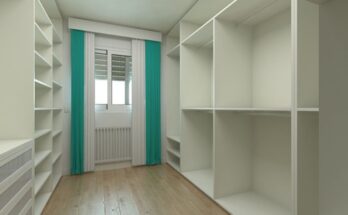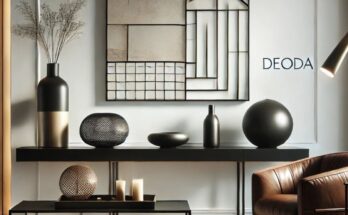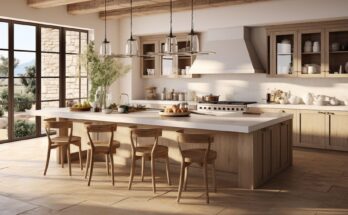In today’s design world, the lines between indoor and outdoor living are becoming increasingly blurred. The concept of indoor-outdoor living emphasizes creating harmonious spaces that invite the beauty of nature into our homes. By merging interior and exterior areas, you can enhance your living environment, improve your well-being, and expand your usable space.
At urbanswall.com, we believe in the power of thoughtfully designed spaces that foster connection with nature and promote a balanced lifestyle. In this article, we’ll explore practical tips and creative ideas for seamlessly blending your interior and exterior spaces.
Contents
- 1 1. Understand the Benefits of Indoor-Outdoor Living
- 2 2. Choose the Right Architectural Features
- 3 3. Use a Cohesive Color Palette
- 4 4. Integrate Similar Materials
- 5 5. Incorporate Nature with Indoor Plants
- 6 6. Create Functional Outdoor Spaces
- 7 7. Use Lighting to Enhance Ambiance
- 8 8. Establish a Seamless Flow
- 9 Conclusion
1. Understand the Benefits of Indoor-Outdoor Living
Before diving into design strategies, it’s essential to recognize the numerous advantages of indoor-outdoor living:
- Enhanced Natural Light: By incorporating large windows or doors, you can allow more natural light to enter your home, creating a brighter and more inviting atmosphere.
- Improved Airflow: Open spaces facilitate better air circulation, promoting a healthier living environment.
- Increased Living Space: Blending indoor and outdoor areas effectively expands your living space, providing more room for relaxation, entertainment, and recreation.
- Stronger Connection with Nature: Enjoying the outdoors from the comfort of your home fosters a sense of tranquility and well-being.
2. Choose the Right Architectural Features
The architectural design of your home plays a significant role in creating a seamless transition between indoor and outdoor spaces. Consider the following features:
- Sliding Glass Doors: These create a wide opening that invites the outside in while allowing easy access to outdoor spaces.
- Large Windows: Floor-to-ceiling windows can provide panoramic views of your outdoor environment, enhancing the sense of connection.
- Covered Patios or Decks: These extensions offer shelter and can be designed as an extension of your indoor living area, making it usable in various weather conditions.
3. Use a Cohesive Color Palette
To achieve a unified look, select a color palette that flows naturally from the interior to the exterior. Consider these tips:
- Natural Colors: Earthy tones and muted colors create a calm and inviting atmosphere, bridging the gap between indoors and outdoors.
- Accent Colors: Use accent colors to tie in outdoor elements, such as plants or furniture, with your indoor decor. This can help create a harmonious transition between spaces.
4. Integrate Similar Materials
Using similar materials in both indoor and outdoor areas creates a visual connection. Here are some ideas:
- Flooring: Consider extending indoor flooring materials, such as hardwood or tile, to outdoor living areas for continuity.
- Textiles: Use outdoor rugs, cushions, and furniture that mimic indoor designs to reinforce the blend of spaces.
- Furniture: Opt for furniture that complements your indoor decor but is also suitable for outdoor use. Look for durable materials that withstand the elements while maintaining aesthetic appeal.
5. Incorporate Nature with Indoor Plants
Bringing elements of nature indoors can further enhance the indoor-outdoor connection. Consider these ideas:
- Indoor Plants: Use potted plants, hanging planters, or wall-mounted greenery to create a natural ambiance.
- Green Walls: Install living walls or vertical gardens indoors to add a lush, organic feel to your space.
- Biophilic Design: This design approach emphasizes incorporating natural elements into your living spaces, promoting well-being and relaxation.
6. Create Functional Outdoor Spaces
Design outdoor areas that can be used for relaxation, dining, and entertainment. Here are some suggestions:
- Outdoor Living Rooms: Furnish your patio or deck with comfortable seating, cushions, and accessories that mirror your indoor decor.
- Dining Areas: Create an al fresco dining experience with a table and chairs, making outdoor meals a delightful part of your lifestyle.
- Fire Pits or Outdoor Kitchens: These features can enhance your outdoor space, making it a destination for gatherings with family and friends.
7. Use Lighting to Enhance Ambiance
The right lighting can transform both indoor and outdoor areas, creating a warm and inviting atmosphere. Here are some tips:
- Layered Lighting: Use a combination of ambient, task, and accent lighting to create a versatile and inviting environment.
- Outdoor Lighting: Incorporate string lights, lanterns, or wall sconces to illuminate outdoor spaces, extending their usability into the evening.
- Natural Light: Maximize natural light during the day with strategically placed mirrors or reflective surfaces that bounce light into your indoor areas.
8. Establish a Seamless Flow
Creating a seamless flow between indoor and outdoor spaces is crucial for achieving the indoor-outdoor living aesthetic. Consider these elements:
- Pathways: Use similar materials for walkways that connect the indoors to the outdoors, reinforcing the sense of unity.
- Consistent Furniture Styles: Select furniture that complements both spaces to create a cohesive look.
- Zoning: Use furniture arrangements and landscaping to define specific areas while maintaining an open and airy feel.
Conclusion
Indoor-outdoor living offers a beautiful way to enhance your home and create a serene living environment that encourages a connection with nature. By understanding the benefits and implementing design strategies that promote flow, you can seamlessly blend your interior and exterior spaces. Whether you’re looking to expand your living area, improve your home’s aesthetics, or simply enjoy the great outdoors from the comfort of your home, embracing this design philosophy will undoubtedly elevate your lifestyle.
Let your creativity shine as you transform your living spaces into a harmonious blend of comfort and nature!
If you gained new insights from this article, explore our blog, Gimkit, for more enlightening content.



